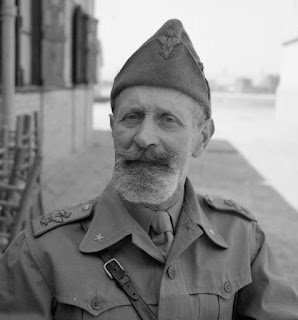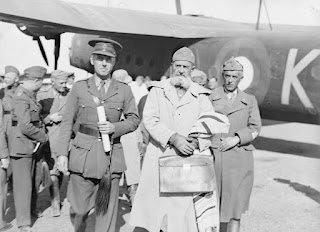Monica Vitti - actress
Star of Antonioni classics also excelled in comedy roles
The actress Monica Vitti, who became famous as the star of several films directed by Michelangelo Antonioni during the early 1960s, was born on this day in 1931 in Rome. Antonioni, with whom she had a romantic relationship that lasted a decade, cast her as his female lead in L'avventura (1960), La notte (1961), and L'eclisse (1962), three enigmatically moody films once described as a "trilogy on modernity and its discontents". She also starred for him in his first colour film, Il deserto rosso (1964), which continued in a similar vein. Her performance earned her a second of four Golden Grail awards. Vitti was also honoured with five David di Donatello awards as Best Actress from the Italian Film Academy. After splitting with Antonioni, Vitti excelled in comedy, working with directors such as Mario Monicelli, Dino Risi, Alberto Sordi and Ettore Scola. Her performances in movies such as Monicelli’s The Girl With the Pistol (1968) and I Know That You Know That I Know (1982) saw her spoken of as one of the great actors of the commedia all’Italiana genre alongside Sordi himself, Ugo Tognazzi, Vittorio Gassman and Nino Manfredi. Read more…
____________________________________________________________
Vincenzo Bellini - opera composer
Short but successful career of Sicilian musical genius
The talented composer of the celebrated opera, Norma, was born Vincenzo Salvatore Carmelo Francesco Bellini on this day in 1801 in Catania in Sicily. Bellini became known for his long, flowing, melodic lines, which earned him the nickname, ‘The Swan of Catania’. He enjoyed great success during the bel canto era of Italian opera in the early part of the 19th century and many of his operas are still regularly performed today. Born into a musical family, Bellini showed early talent. It was claimed he could sing an aria at 18 months and could play the piano by the age of five. Although some writers have said these are exaggerations, Bellini is known to have already begun composing music by his teens. He was given financial support by the city of Catania to study music at a college in Naples and while he was there he was profoundly influenced by meeting the composer Gaetano Donizetti, having heard his opera, La zingara, performed at Teatro di San Carlo. Bellini then wrote his first opera, Adelson e Salvini, which his fellow students performed to great acclaim. In 1825, Bellini began work on what was to be his first professionally-produced opera, Bianca e Fernando. Read more…
___________________________________________________________
Annibale Carracci - painter
Bolognese master produced his most influential work in Rome
The Baroque painter Annibale Carracci was born on this day in 1560 in Bologna. Annibale and his followers were to become highly influential in the development of Roman painting, bringing back the classical tradition of the High Renaissance. He was probably apprenticed as a painter with members of his own family in Bologna. But his talents began to develop during a tour of northern Italy in the 1580s. He lodged in Venice with the painter Jacopo Bassano, whose style of painting influenced him for a time. Annibale has been credited with rediscovering the early 16th century painter Correggio, who had almost been forgotten outside Parma. Annibale’s Baptism of Christ, painted in 1585 for the Church of San Gregorio in Bologna, is a brilliant tribute to him. In 1582 Annibale opened a studio in Bologna with his brother, Agostino Carraci, and his older cousin, Ludovico Carracci. While working there, Annibale painted The Enthroned Madonna with St Matthew in 1588 for the Church of San Prospero in Reggio. Annibale collaborated with the other two Carracci on frescoes in the Palazzo Magnani (now the Palazzo Salem) and two other noble houses in Bologna. Read more…
____________________________________________________________
Villa Giusti armistice
Talks held at villa in Padova ended First World War in Italy
An armistice signed between Italy and Austria-Hungary at Villa Giusti near Padua ended World War I on the Italian front on this day in 1918. After the Allied troops were victorious in the Battle of Vittorio Veneto, the Austria-Hungary commanding officers asked for a ceasefire and for peace talks. They were invited to Villa Giusti at Mandria just outside Padua, which was owned by Count Giusti del Giardino, a former mayor of Padua and an Italian senator. The principal signatories on the Italian side were Tenente Generale Pietro Badoglio and Maggior Generale Scipione Scipioni. Leading the Austria-Hungary delegation was General Viktor Weber Edler von Webenau. During the war, the Villa Giusti had been the temporary residence of King Victor Emmanuel III when he was away from the front. The armistice signed on 3 November ended the fighting and was seen by many Italians as the final phase of the Risorgimento, the movement started in 1815 to unify Italy. The bells of a nearby church rang out when news came from the villa that the armistice had been agreed. Read more…
_____________________________________________________________
Giovanni Leone - controversial politician
First president to resign over a scandal
The politician Giovanni Leone, who served both as prime minister of Italy and president during a career that spanned seven decades but which was ultimately overshadowed by scandal, was born on this day in 1908 in Naples. A co-founder, with his father, Mauro, of the Christian Democracy in 1943, Leone was elected to the Chamber of Deputies in 1948, served as prime minister for brief periods in 1963 and 1968 and was elected president in 1971. He occupied the Palazzo Quirinale, the main Rome residence of the president, for seven years but was forced to resign after being implicated in the Lockheed bribery scandal, the first president to step down over such an impropriety. The accusation levelled at him was that he accepted payment from the American aircraft manufacturer in connection with the purchase of Hercules military transport planes. The allegations originated from the United States and were published in Italy by the news magazine L’Espresso. Other politicians were said also to have accepted bribes but Leone was accused directly after documents unearthed in the US referenced an Italian prime minister given the codename Antelope Gobbler, which was taken to mean Leone - lion. Read more…



















